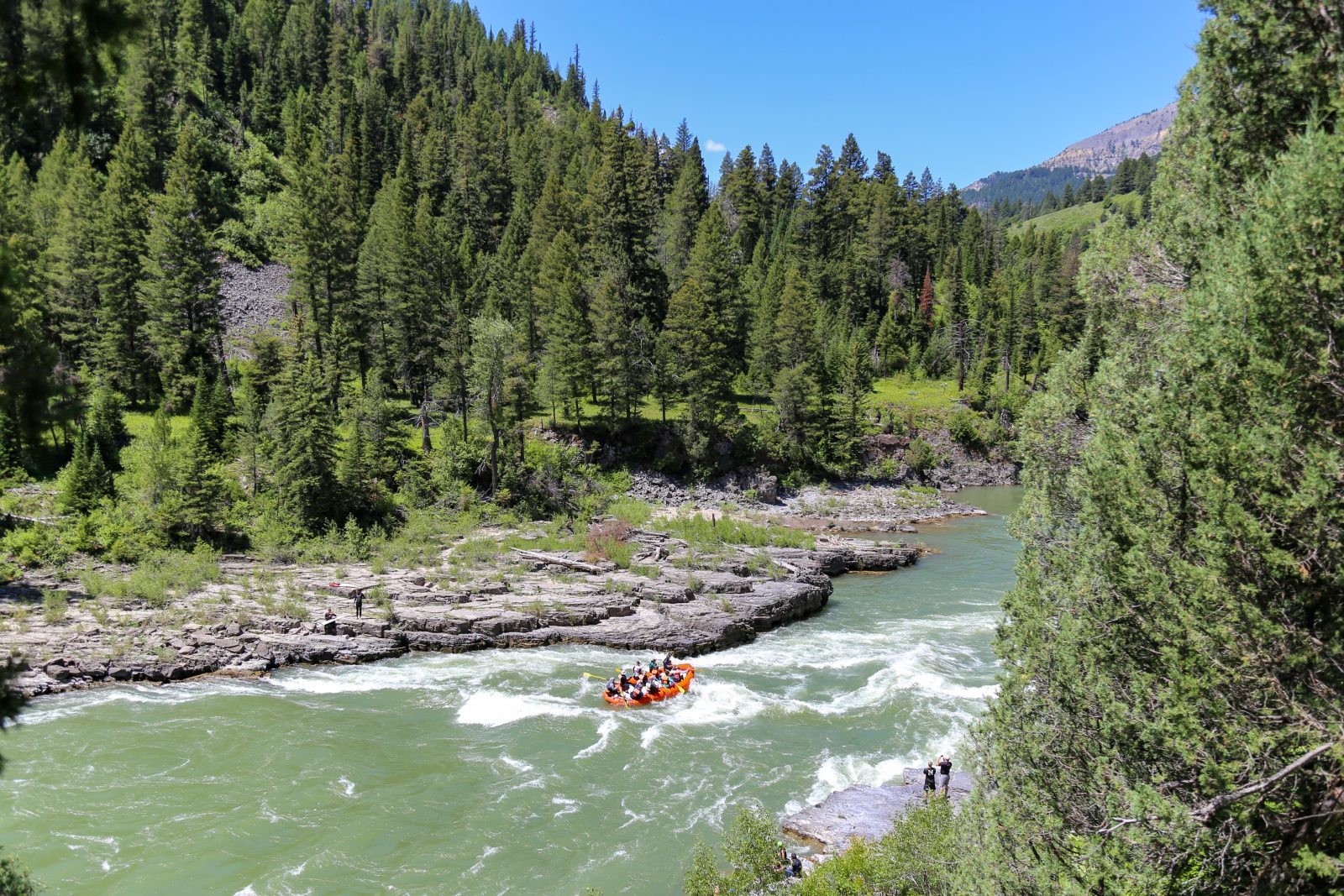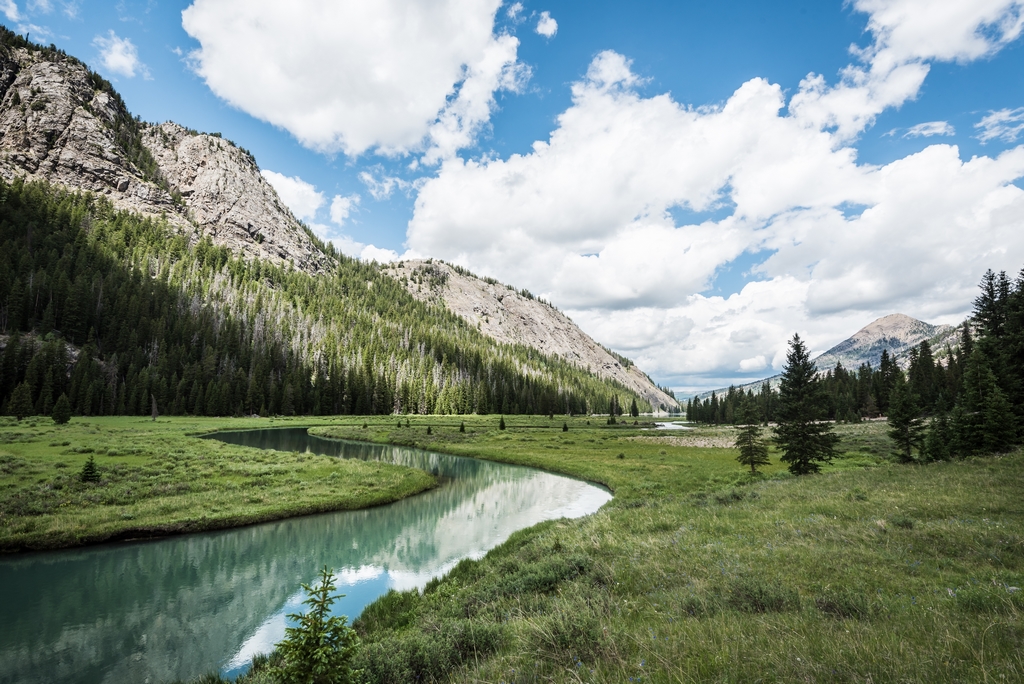The Two-Ocean Stream


It’s the only feature of its kind in North America: a place in Wyoming where visitors can watch a flow of water divide on the crest of the Continental Divide, beginning journeys that lead thousands of miles in opposite directions, eventually flowing into the Pacific and Atlantic Oceans.
By Eric Herman
The Rocky Mountains are chock-full of natural wonders. From numerous towering alpine peaks, to the vast Aspen forests, the Rockies are among North America’s greatest national treasures. One of the most amazing features is the Continental Divide.
Described as the backbone of the continent, the Continental Divide actually divides watersheds: everything on its western slope drains into the Pacific, and everything on its eastern slope into the Atlantic. Perhaps its most unusual feature is one little creek in Wyoming near Yellowstone National Park, which drains into both.
It’s found in the Teton Wilderness in northwestern Wyoming, one of the most remote and rugged places in America, and a place of remarkable natural beauty. Some intrepid visitors take a difficult, 15-mile hike to a fork in Two Ocean Creek known as “Parting of the Waters.”
TWO-WAY STREAM
This unique hydrological spot was listed as a National Natural Landmark in 1965 and has been attracting attention ever since. A tattered wooden sign nailed to a tree reads “Atlantic Ocean 3488” next to an arrow pointing east, and “Pacific Ocean 1353” next to an arrow pointing west.
Two Ocean Creek looks unremarkable, like countless other forest streams, but it’s the only stream in North America that flows into two oceans, thanks to its location on the Continental Divide.
The Continental Divide is a winding crest that stretches from Alaska south through the Canadian Rockies, the contiguous 48, and down through Mexico. It functions as a gravitational boundary that separates the major watersheds flowing to different oceans. When a raindrop falls on the west side of the Continental Divide, it will join rivers that wind their way to the Pacific Ocean. If a raindrop falls on the east side of the divide, it will flow to the Atlantic or Arctic Oceans.
Technically, the stream and river systems that divide at Parting of the Waters create what amounts to the elusive Northwest Passage, at least if you’re a fish. Pacific Creek, which heads west from Parting of the Waters, empties into the Snake River and then into the Columbia before flowing into the Pacific. Atlantic Creek flows into the Yellowstone, Missouri, and Mississippi Rivers, eventually reaching into the Gulf of Mexico, which is technically considered part of the Atlantic Ocean.
If you connect the two creeks’ watersheds on a map, they form a single passage connecting Oregon and Louisiana, in effect meaning the northeastern two-thirds of North America is technically an island, so to speak. Explorers looking for the Northwest Passage between the oceans never found it. But if they did, they would have quickly realized the water is far too shallow for travel by boat.
A WAY FOR FISH
For a fish, it’s a different story. The high alpine meadow at Two Ocean Pass has had a significant impact on the migration of fish populations over millennia. Scientists believe that when the meadow is flooded in the spring, fish can swim from the Pacific watershed into the Atlantic watershed.
This is likely how the Yellowstone cutthroat trout (Oncorhynchus clarkii bouvieri) originally colonized Yellowstone Lake about 14,000 years ago. As the glacial ice receded, fish were not able to swim upstream in the Yellowstone River all the way to Yellowstone Lake due to the natural barrier of the Lower Falls. Thus, cutthroat trout likely colonized the lake by swimming across Two Ocean Pass and then were the only trout species living in the lake for thousands of years.
Two Ocean Pass is not only relevant to the dispersal of native Yellowstone cutthroat trout, but also to non-native fish species. A recent study investigated a hypothesis that nonnative lake trout (Salvelinus namaycush) could have invaded Yellowstone Lake by swimming across Two Ocean Pass rather than the original assumption that they were introduced by humans.
While the origin of lake trout in Yellowstone Lake remains uncertain, the potential for nonnative fish to cross Two Ocean Pass in the future presents a serious problem. To protect the native Yellowstone cutthroat trout in Yellowstone Lake, it may be necessary to continue monitoring these waters and proactively removing nonnative fish.
For curious humans who don’t mind a long hike, Parting of the Waters is the only place where with the casual swish of your fingers you can forever change the course of a drop of water.
Photo by Travis J. Camp | Shutterstock
Reference: Koel, Todd M., Colleen R. Detjens, and Alexander V. Zale. “Two Ocean Pass: An Alternative Hypothesis for the Invasion of Yellowstone Lake by Lake Trout, and Implications for Future Invasions.”











